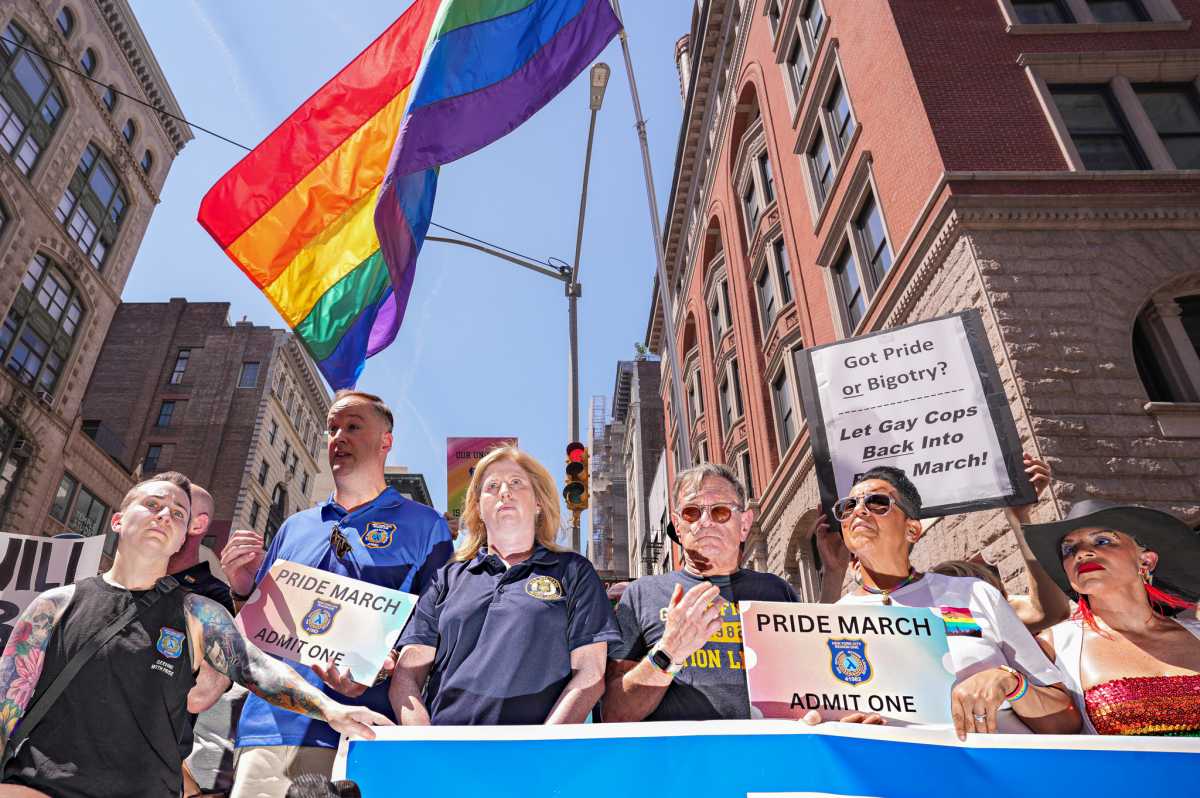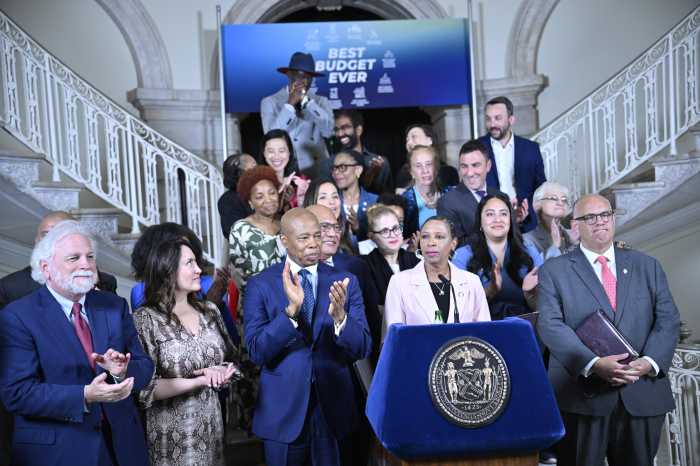As a working artist and longtime resident of Long Island City resident, I am thoroughly familiar with the history of the P.S. 1 Contemporary Art Center, beginning in its fledging days as an experimental playground on the New York art scene.
Before the building became a bastion of the mainstream art world, we used to run through the basement to find the curiosities artists had embedded in the building’s bowels, before climbing up to the attic to perhaps see old tattered remains of clothes created by Louise Bourgeois. In the stairwells, we spotted hoses entangled around pipes, only to realize they were only fire hoses, but elegantly arrayed nonetheless.
Such was the mystery and excitement of exploring P.S. 1.
For its current “Greater New York 2005” exhibit, the museum considered 2,000 solicitations, among them the work of 350 “art professionals.” I wonder how many of the artists who created the 162 pieces selected don’t have a gallery? Who are “art professionals”? The fact that P.S. 1 defines artists, curators, art schools, as art professionals makes me nervous.
The artists at P.S. 1 have all done an amazing job at walking the walk to bring this work into existence. There are so many gems I won’t spend time here. Go see the work. Hopefully, you will meet another art enthusiast, and you will run home together and start a movement, or an organization that meets to share ideas and create events that put those ideas out there.
When you are there, try to stay in your body and feel what you are experiencing. I bet you go into your head. And that is okay; a great deal get accomplished there. But art is from life—a symbol of what is great, a reminder of the beauty, the grandness and the sheer possibilities that exist in living every day.
The P.S. 1 exhibit is mostly idea-driven and collaged; not experiential, with some notable exceptions—the drums in the hall playing themselves and the living hand in a frame performance woke up. These pieces evoke a response.
If the work on view is about all the things the exhibition notes posted on the walls say it is, then why aren’t people at the museum talking about those issues? Instead, viewers mostly are wondering what the museum’s comments mean. They are talking about the issues around the work, not the work. And the work rarely speaks to what they are concerned with, except in the cases where the work uses political themes—and there the meaning is very clear. As clear, in fact, as The New York Times, which does editorial better, and with more clarity. Leave it to the journalists.
People visiting a museum are often incredibly sensitive, open, loving and willing to listen and learn. They are wondering what the work is about. And they too often read blurbs on the walls that are confusing, alienating or irrelevant to what they experience every day.
People want to see work that makes them feel—laugh, get angry, have some sort of interaction with what is on exhibit. Nobody around me at P.S. 1 had an expression on their face, let alone a feeling.
Art is about process and the act of creating to understand. I did not see struggle or process in this show. I picture a show where the artists get together and jam on their beliefs, decide to make some work around those ideals and share the images with people. Or perhaps they simply share the process toward the final work.
The process of creation is a mystery, even to most artists. We don’t have each other to look up to, to experiment with, to learn from day to day. Our heroes are too often above us, and secretive or protected. I remember a wonderful respite from that obstacle in a lecture Terry Winters gave at Pratt in which he spoke about his studio practice. Instead of a Metropolitan Museum of Art-style lecture, he gave a down-home version of what he thinks about and goes through as he creates a painting.
Every artist wants to hear their hero speak about their process, their day-to-day work. Why don’t museums have shows about works in progress? Work that didn’t go so well, with sketches and thoughts presented along with the final work? Would it weaken an artist’s facade of being the expert on what he or she is doing? Would they appear vulnerable to shifting tendencies and therefore not as marketable to investors seeking stability in their collections?
Artists do not by predisposition want all this order. Creation is a right-brain activity and order derives from the left brain.
When P.S. 1 or any museum talks about emerging work, I think of things that are new to the world they enter. So what would be an emerging artist? One that is a bit clumsy, crossing barriers they don’t even know exist. Artists struggle with creating their images. Where are the traces of that search? Some work at “Greater New York” was scratching its way to the surface to communicate, but most was ready made for the gallery. Robert Rauschenberg said that when confronted with a work of art you should be fundamentally changed—if you are not, the art is bad or you are stupid. Years ago, P.S. 1 had art work that was alive, raw, imperfect, questioning, but it has become perfect, refined, and done.
This leaves little room for the viewer to interact. I feel that we live in a society with many opportunities, and P.S. 1 used to offer rare chances to see work that we may not see anywhere else. But when I go to an emerging artists show and basically see the same work I saw at galleries this past year, or soon will see, I feel there is no need for this particular venue to exist.
Critics think about criticism. Curators—arranging shows, think about deals. Artists need to let the critics, museums and galleries know: Hush! Be gone, you have no power here. And artists also need to wake up and help each other. The barriers that have dissolved in the past century are honorable beacons. Art can heal; creation has the power to bring new life. The scene does not have to be as it is.
We have made an ugly baby, and we love her, but she is selfish because her needs have not been met. Give to each other, share ideas, share money you make with an artist friend who is making less and support daily efforts at communication. Never take down a friend; help lift them up when they have fallen. Use you heart to advise, guide and most of all love.
gaycitynews.com
































